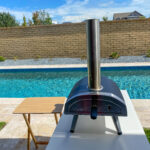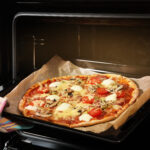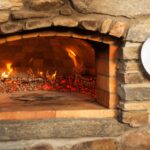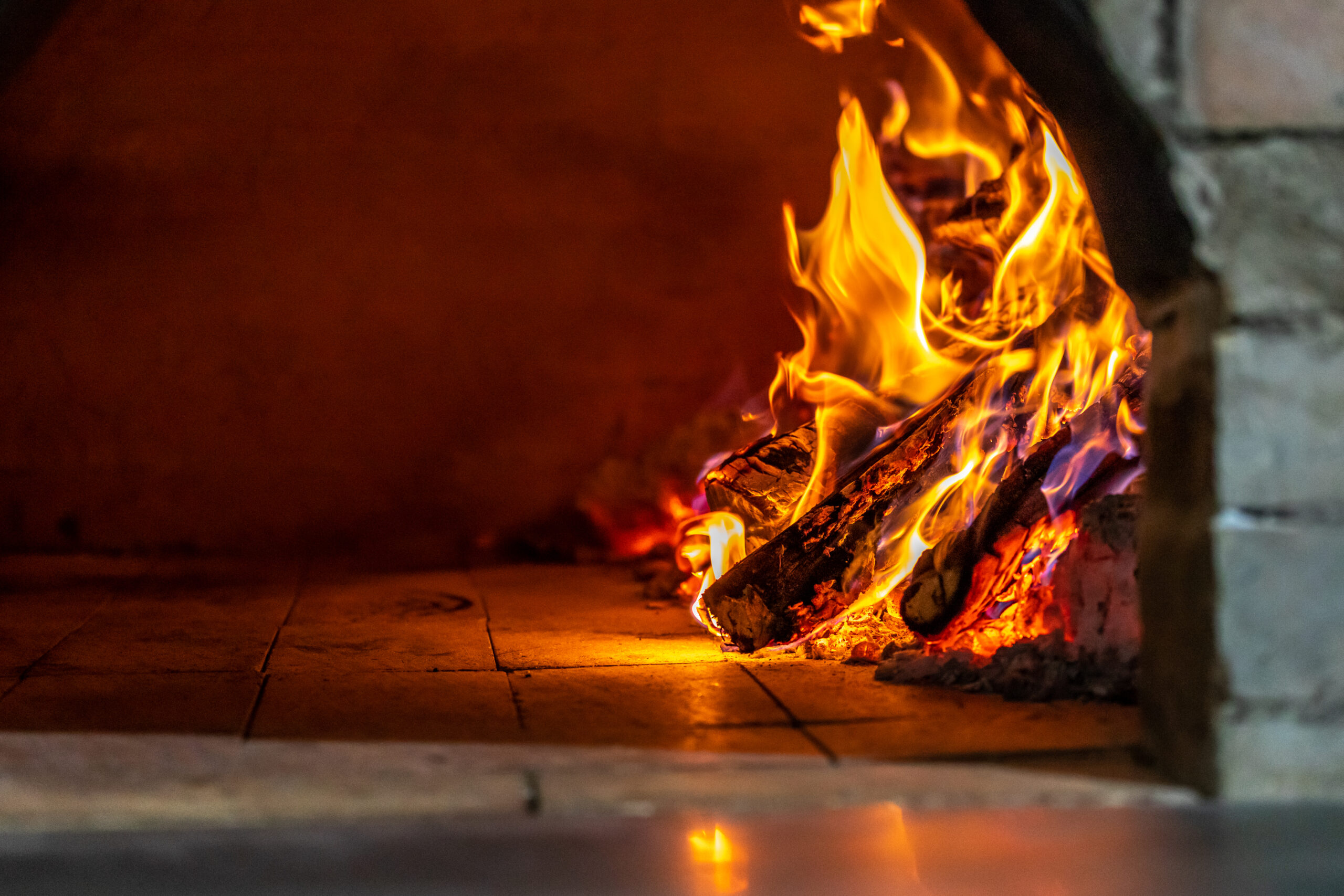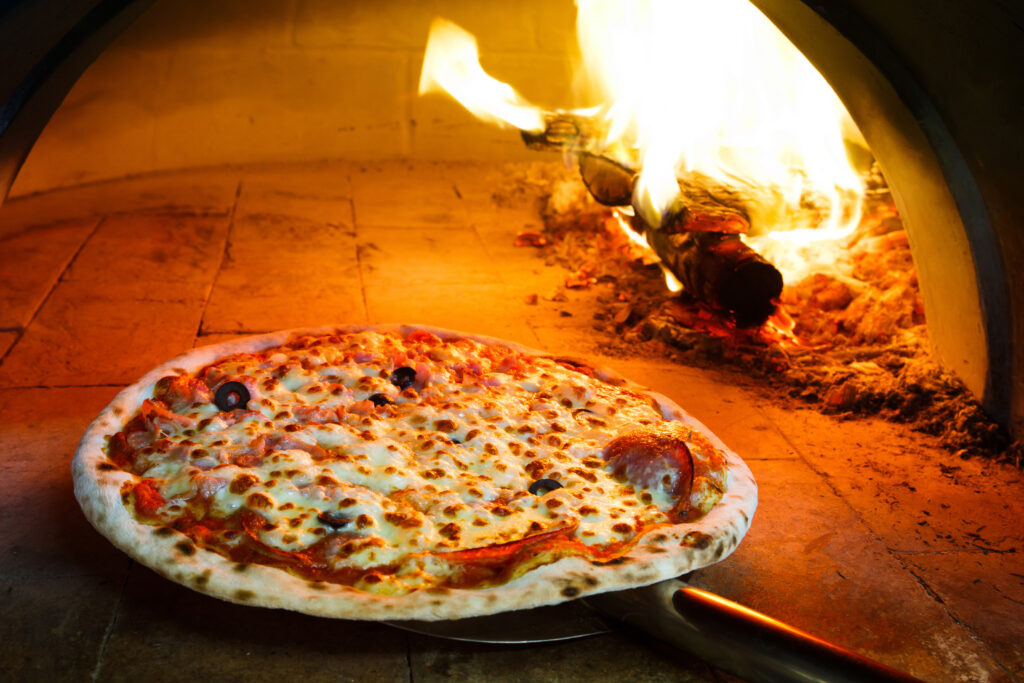A wood-fired pizza oven is a great addition to any backyard or outdoor kitchen. Not only does it add a unique touch to your outdoor space, but it also allows you to cook delicious, authentic pizza at home. However, when it comes to selecting the right size of pizza oven, there are a few things to consider.
The size of your wood-fired pizza oven will depend on a few factors, including the size of your outdoor space, the number of people you plan on cooking for, and how often you plan on using the oven. Generally speaking, a smaller oven will heat up faster and require less wood, making it a better choice for those who plan on cooking for just a few people. However, if you plan on hosting large gatherings or cooking for a family, a larger oven may be a better choice. Ultimately, the size of your oven will come down to personal preference and how much space you have available in your outdoor kitchen.
Understanding the Basics of a Wood Fired Pizza Oven
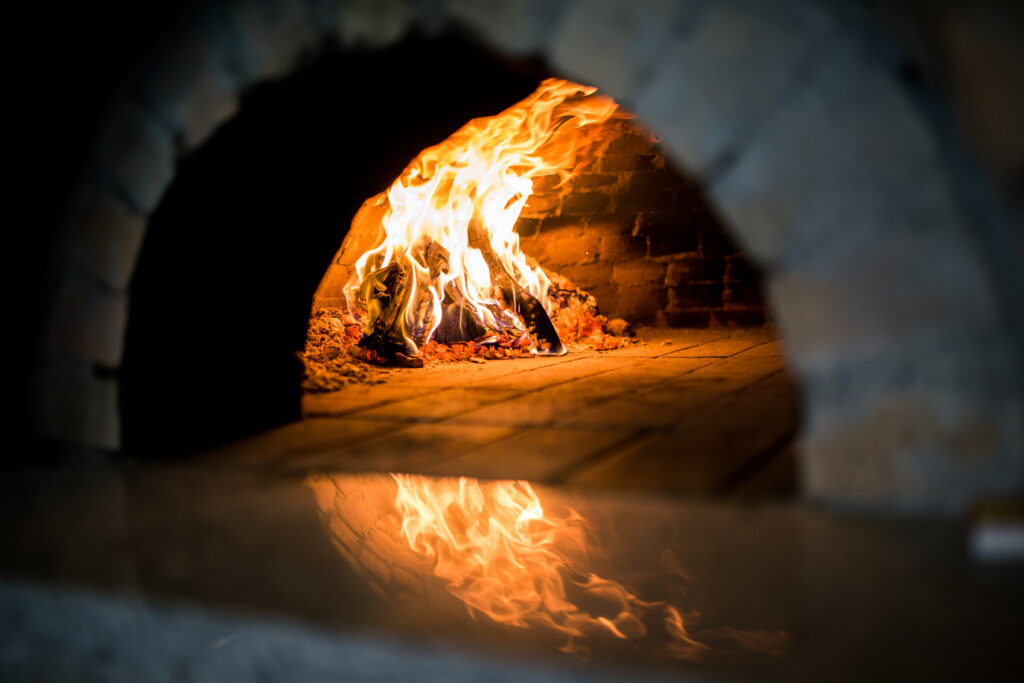
A wood-fired pizza oven is a traditional oven that is used to cook pizza and other foods using wood as the primary fuel source. These ovens are typically made of brick or clay and are designed to retain heat for extended periods, allowing for consistent and even cooking.
The basic design of a wood-fired pizza oven consists of a cooking chamber, a chimney, and a firebox. The cooking chamber is where the pizza is placed to cook, and the chimney allows smoke and heat to escape. The firebox is where the wood is burned to create heat.
One of the most important aspects of a wood-fired pizza oven is its size. The size of the oven determines how much food can be cooked at once and how long it takes to cook. A larger oven can cook more food at once but may take longer to heat up, while a smaller oven heats up faster but can only cook one or two pizzas at a time.
When selecting the size of your wood-fired pizza oven, it is important to consider the amount of food you plan to cook and the space you have available. A larger oven may be necessary if you plan to cook for a large group of people, while a smaller oven may be more appropriate for a smaller gathering.
In addition to size, other factors to consider when selecting a wood-fired pizza oven include the type of wood to use, the temperature range of the oven, and the materials used to construct the oven. By understanding the basics of a wood-fired pizza oven, you can select the right size and type of oven to meet your needs and create delicious, authentic pizza at home.
Determining the Size of Your Pizza Oven
When it comes to building a wood-fired pizza oven, determining the appropriate size is crucial. The size of your oven will depend on various factors, including the size of your pizza, the number of pizzas you want to cook simultaneously, and the amount of available space.
Consideration of Pizza Size
The first thing to consider when determining the size of your pizza oven is the size of your pizza. The standard size of a pizza is 12 inches, but some people prefer larger sizes. If you plan to make larger pizzas, you will need a larger oven.
It is important to note that the size of your oven should not be based solely on the size of your pizza. The oven should also be able to accommodate the thickness of the crust, as well as any additional toppings. A good rule of thumb is to add 2 inches to the diameter of your pizza to determine the size of your oven.
Number of Pizzas to be Cooked Simultaneously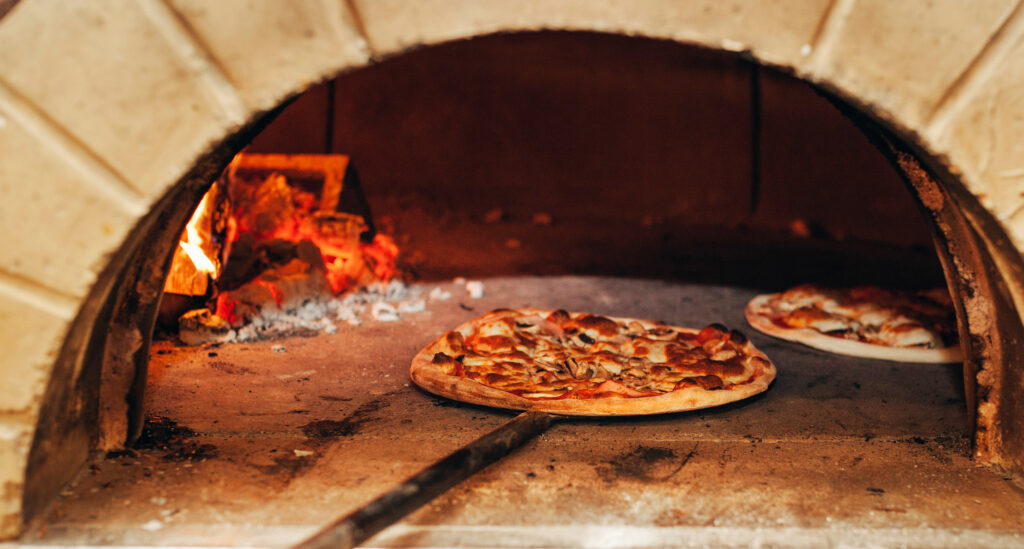
The next thing to consider is the number of pizzas you want to cook simultaneously. If you are planning to use your oven for personal use, a smaller oven that can accommodate one or two pizzas at a time may be sufficient. However, if you plan to use your oven for commercial purposes, you will need a larger oven that can accommodate multiple pizzas at once.
It is important to note that the size of your oven will also affect the cooking time of your pizzas. A larger oven will take longer to heat up, but it will also be able to cook more pizzas at once. A smaller oven will heat up faster, but it will only be able to cook one or two pizzas at a time.
In conclusion, when determining the size of your wood-fired pizza oven, it is important to consider the size of your pizza, the number of pizzas you want to cook simultaneously, and the amount of available space. By taking these factors into consideration, you can ensure that your oven is the right size for your needs.
Importance of Insulation in Pizza Oven Size
When it comes to wood-fired pizza ovens, insulation is an essential component that can significantly impact the oven’s performance and size. Insulation plays a crucial role in maintaining the oven’s temperature and reducing heat loss, resulting in a more efficient and effective cooking process.
Insulation is especially important for larger pizza ovens. As the size of the oven increases, so does the amount of heat required to reach and maintain the optimal cooking temperature. A well-insulated oven can use less fuel and maintain heat for longer periods, allowing for more consistent and even cooking.
Proper insulation can also help prevent heat loss and reduce the risk of overcooked or undercooked pizzas. Without proper insulation, the oven may struggle to maintain a consistent temperature, resulting in unevenly cooked pizzas.
When selecting the appropriate size for a wood-fired pizza oven, it is crucial to consider the insulation. A larger oven may require thicker insulation to maintain the desired temperature and reduce heat loss. It is essential to consult with a professional or refer to manufacturer guidelines to determine the appropriate insulation thickness for the desired oven size.
In conclusion, insulation is an essential factor to consider when selecting the appropriate size for a wood-fired pizza oven. Proper insulation can help maintain optimal cooking temperatures, reduce heat loss, and prevent unevenly cooked pizzas. It is crucial to consult with professionals or refer to manufacturer guidelines to determine the appropriate insulation thickness for the desired oven size.
Impact of Oven Size on Cooking Time
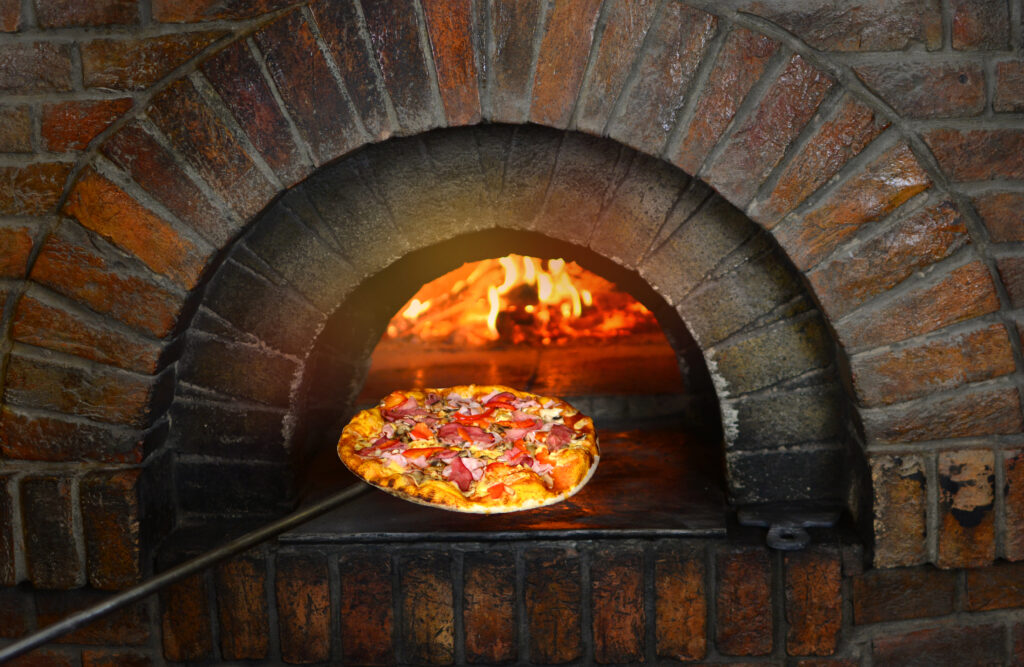
The size of a wood-fired pizza oven has a significant impact on the cooking time of the pizza. A larger oven will take longer to heat up and will require more fuel to maintain the desired temperature. However, it can also accommodate more pizzas at once, which can be beneficial for commercial settings or large gatherings.
On the other hand, a smaller oven will heat up faster and require less fuel to maintain the desired temperature. This can be advantageous for home use or smaller gatherings. However, it will also limit the number of pizzas that can be cooked at once.
It is important to note that cooking time is not solely determined by the size of the oven. Other factors such as the type of wood used, the temperature of the oven, and the thickness of the pizza crust will also play a role. Nonetheless, the size of the oven is a critical factor to consider when planning to cook pizza in a wood-fired oven.
To summarize, the size of the wood-fired pizza oven will impact the cooking time of the pizza. A larger oven can accommodate more pizzas at once but will take longer to heat up and require more fuel, while a smaller oven will heat up faster and require less fuel but can only cook a limited number of pizzas at once. Ultimately, the size of the oven should be chosen based on the specific needs of the user.
Relation Between Oven Size and Heat Retention
The size of a wood fired pizza oven can have a significant impact on its heat retention capabilities. Generally, larger ovens take longer to heat up but retain heat for a longer period of time, while smaller ovens heat up faster but lose heat quicker.
The amount of insulation used in the oven’s construction also plays a significant role in heat retention. A well-insulated oven will retain heat for a longer period of time than one with insufficient insulation.
When considering the size of a wood fired pizza oven, it’s essential to keep in mind the intended use. If the oven is intended for occasional use or small gatherings, a smaller oven may be more practical. However, if the oven is intended for commercial use or larger gatherings, a larger oven may be necessary to meet the demand.
It’s important to note that the size of the oven also affects the amount of wood required to heat it. Larger ovens will require more wood to heat up and maintain temperature, which can be a significant factor to consider for those who want to minimize their wood consumption.
In conclusion, the size of a wood fired pizza oven is directly related to its heat retention capabilities. Larger ovens retain heat longer but require more time and wood to heat up, while smaller ovens heat up faster but lose heat quicker. The intended use of the oven should be taken into consideration when choosing the size, as well as the amount of insulation used in its construction.
Cost Implications of Oven Size
When deciding on the size of your wood-fired pizza oven, it’s important to consider the cost implications. Larger ovens typically require more materials and longer construction times, which can increase the overall cost of the project. Here are some factors to consider:
Materials
The size of your oven will determine the amount of materials needed for construction. Larger ovens require more bricks, mortar, insulation, and other materials, which can significantly increase the cost of the project. It’s important to budget accordingly and shop around for the best prices on materials.
Labor
A larger oven will require more labor to construct, which can add to the overall cost of the project. It’s important to factor in the cost of labor when deciding on the size of your oven. If you plan on building the oven yourself, be sure to budget enough time to complete the project.
Fuel Consumption
Larger ovens require more fuel to reach and maintain the desired temperature. This can result in higher fuel costs over time. It’s important to consider the cost of fuel when deciding on the size of your oven.
Capacity
The size of your oven will determine its capacity. A larger oven can accommodate more pizzas at once, which can be beneficial if you plan on hosting large gatherings. However, a smaller oven may be more practical if you only plan on making pizzas for your family.
In conclusion, the size of your wood-fired pizza oven can have a significant impact on the overall cost of the project. It’s important to carefully consider the factors outlined above when deciding on the size of your oven. By doing so, you can ensure that you build an oven that meets your needs and fits within your budget.
Space Requirements for Pizza Oven Installation
Before installing a wood-fired pizza oven, it is important to ensure that you have enough space to accommodate it. Here are some general space requirements to keep in mind:
- Outdoor Pizza Ovens: If you plan to install an outdoor pizza oven, you will need sufficient space in your backyard or patio. Most outdoor pizza ovens are large and require a dedicated area for installation. You will also need to consider factors such as ventilation and safety when choosing a location for your oven.
- Indoor Pizza Ovens: If you plan to install an indoor pizza oven, you will need to ensure that you have enough space in your kitchen or dining area. Indoor pizza ovens can be installed in a variety of locations, including under a range hood or in a dedicated pizza oven cabinet. However, you will need to ensure that you have enough clearance around the oven to prevent fire hazards.
- Size of Pizza Oven: The size of your pizza oven will also impact the amount of space you need for installation. Most wood-fired pizza ovens range in size from 24 inches to 48 inches in diameter. Larger ovens will require more space for installation, so make sure to measure your available space before choosing a pizza oven.
- Clearance Requirements: In addition to space requirements, you will also need to consider clearance requirements for your pizza oven. This includes clearance from combustible materials such as wood, drywall, and insulation. Most pizza oven manufacturers provide specific clearance requirements for their ovens, so make sure to consult the manufacturer’s instructions before installation.
- Ventilation Requirements: Finally, you will need to consider ventilation requirements for your pizza oven. Proper ventilation is essential for preventing smoke and carbon monoxide buildup. Most pizza oven manufacturers provide specific ventilation requirements for their ovens, so make sure to consult the manufacturer’s instructions before installation.
By keeping these space requirements in mind, you can ensure a safe and successful installation of your wood-fired pizza oven.
Maintenance and Cleaning Considerations
One of the most important aspects of owning a wood-fired pizza oven is maintenance and cleaning. Proper maintenance and cleaning will not only ensure that your oven lasts for many years, but it will also ensure that your pizzas taste great every time.
Cleaning the Oven
Cleaning your wood-fired pizza oven is essential to keep it functioning properly. The best way to clean your oven is to allow it to cool completely and then sweep out any ash or debris with a metal brush into a suitable metal container. Never throw water into the pizza oven as this could damage its components.
For minor spills, it’s best to allow the oven to burn them away. Do not use abrasive cleansers or liquid cleaners to clean up spills. The pizza oven cooks with fire and gets very hot, so do not attempt to clean up spills by hand while the oven is in use or before it has cooled.
Maintenance Tips
After each use, or when ash has built up too much, allow the ash to cool then sweep it out of the outdoor pizza oven with a metal brush into a suitable metal container. Afterwards, you can use the cooled ash as a fertilizer for your garden.
Regularly check the oven’s chimney and flue for any blockages or build-up of soot. This can be done by shining a flashlight up the chimney and looking for any obstructions. If you notice any blockages or build-up, it’s important to clean them out to prevent a fire hazard.
It’s also important to keep the oven dry and covered when not in use. Moisture can cause damage to the oven’s components, so it’s important to keep it dry. Covering the oven with a suitable cover will also protect it from the elements and prolong its lifespan.
In summary, regular maintenance and cleaning of your wood-fired pizza oven is essential to ensure its longevity and great-tasting pizzas. Remember to allow the oven to cool completely before cleaning, use a metal brush to sweep out ash and debris, and keep the oven dry and covered when not in use.
Conclusion
In conclusion, the size of a wood-fired pizza oven depends on various factors, including the number of people you plan to serve, the size of your outdoor space, and your budget.
Based on our research, we recommend a minimum oven size of 31.4 inches, which can cook most Italian pizzas in 90 seconds to three minutes, making it ideal for small to medium-sized gatherings. If you plan to host larger parties or events, consider investing in a larger oven such as a 50-inch diameter oven, which can accommodate more pizzas at once.
When selecting a wood-fired pizza oven, keep in mind that the shape and dimensions of the oven play a crucial role in the circulation of air inside it. The dome shape forms a small pocket where hot air generated from the fire circulates above the pizza, and the heat is transferred by radiation. Therefore, it’s important to choose an oven with a half-spherical shape to ensure even cooking.
Lastly, it’s essential to avoid common mistakes when using a wood-fired pizza oven, such as using wet wood, not preheating the oven properly, and not rotating the pizza. By educating yourself on these mistakes and learning how to avoid them, you can ensure that your wood-fired pizza oven provides delicious, crispy, and flavorful pizzas every time.


